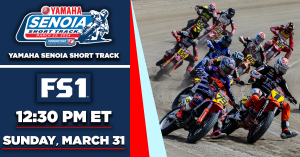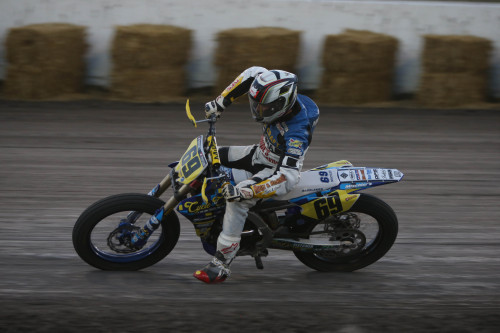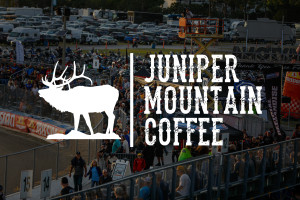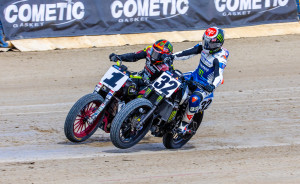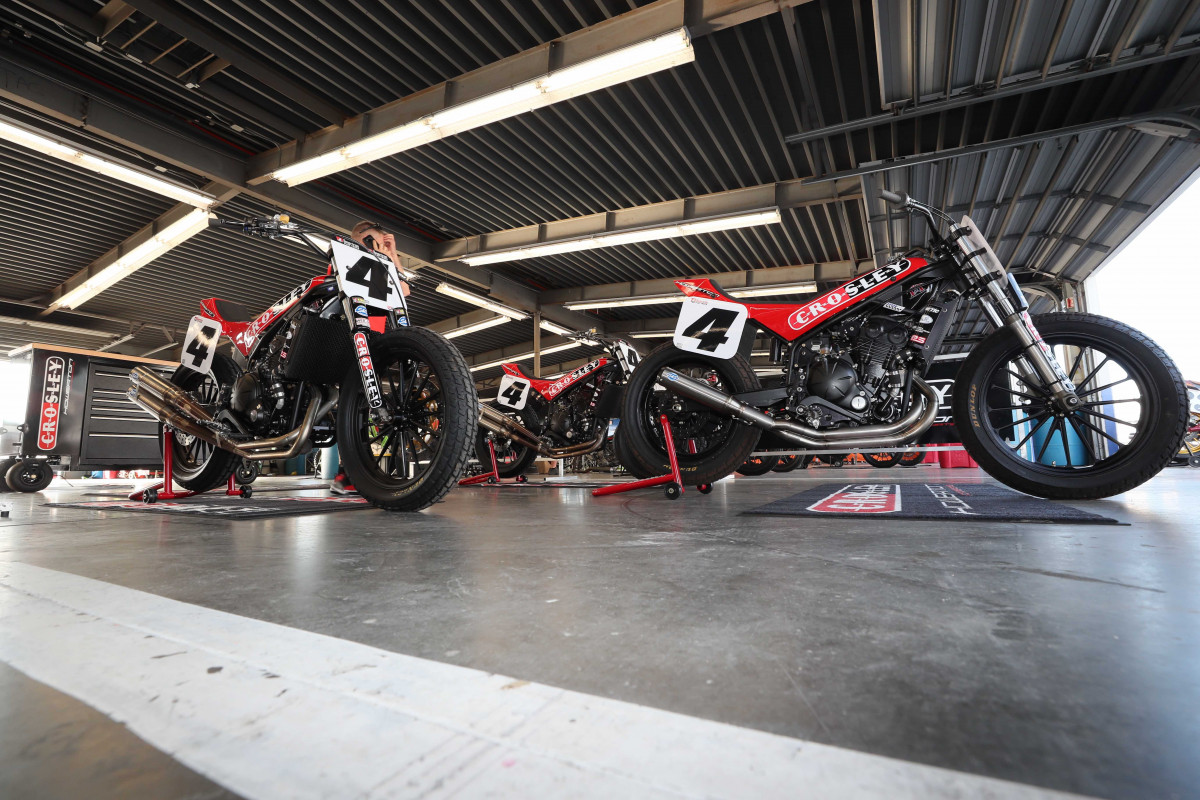
Part II: Team Crosley Howerton: Reunited, Redesigned and Ready to Rock in 2019
Here's Part II of the Crosley Howerton piece that debuted exclusively here yesterday....To read Part I click here: http://www.americanflattrack.com/news/view/team-crosley-howerton-reunited-redesigned-and-ready-rock
Big changes were in store for the Howerton/Smith duo in 2017, as Indian Motorcycle offered them a slot on what was to be a three-man factory squad aboard the company’s purpose-built, new-from-the-ground-up FTR750, with Baker and Mees occupying the other two slots. Smith and Baker would have a more traditional arrangement, with Mees opting for a slightly separate – albeit still factory – setup with his own rig and a range of outside sponsors. Howerton brought along Gordon and Glidden as crewmembers, with LeMastus taking a well-deserved sponsorship break after five years of healthy support.
The trio of Smith, Mees and Baker absolutely steamrolled the competition in 2017 and 2018, their combination of skill, experience and the superbly functional FTR resulting in 14 of 18 wins in 2017, 13 of 18 in 2018, and a staggering 62 out of a possible 108 podium spots during the two years.
“The Indian deal was really good for us,” says Howerton. “Outside of the factory Honda team in the 1980s, there really have only a couple of factory rides in professional dirt track racing for decades and decades, and to have Indian pick me and Bryan and Jeff and Dink for one of them…well, it was a big deal. It made us proud.”
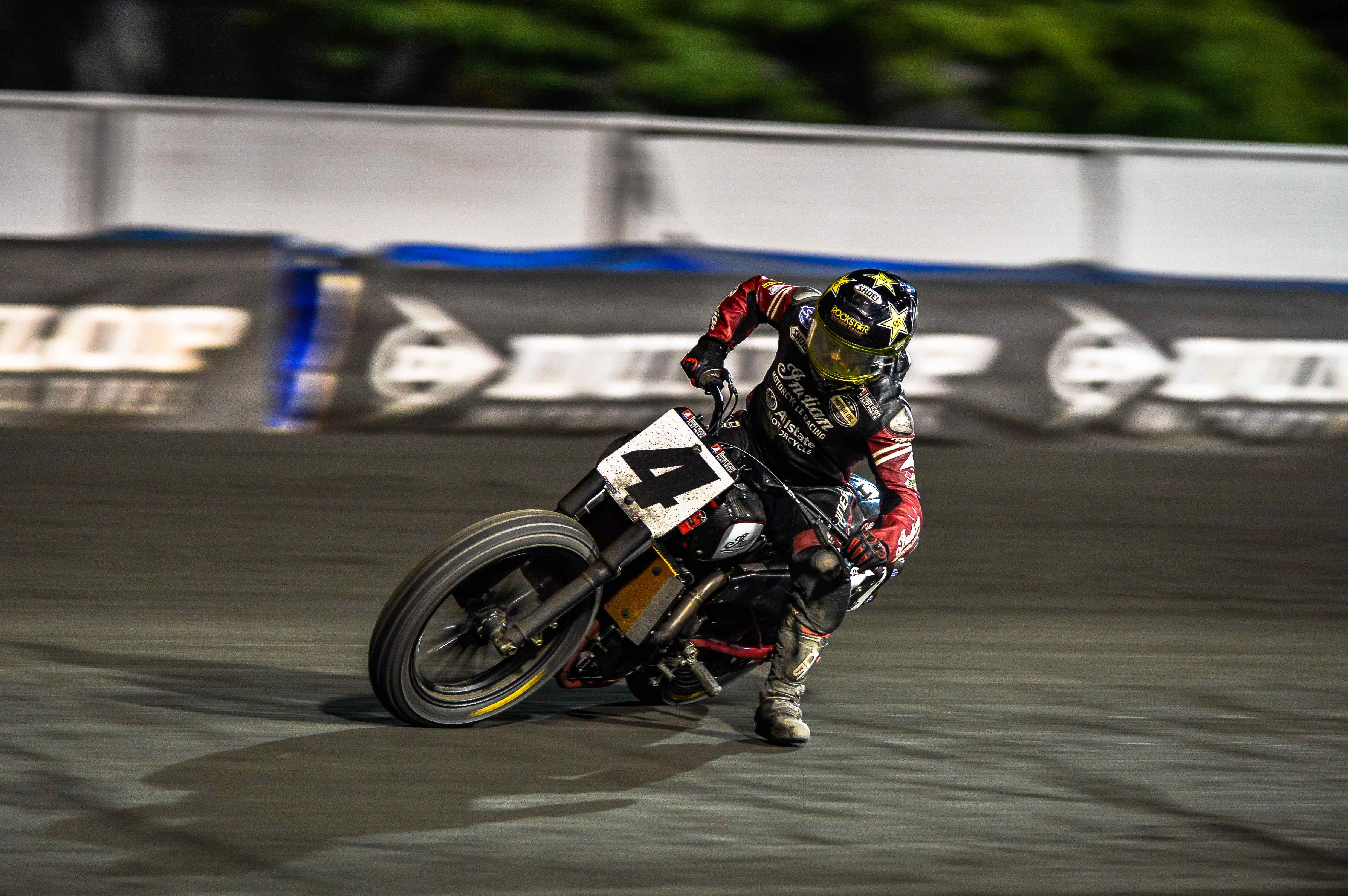
Bryan Smith in action on the Indian FTR750 at last year's Meadowlands Mile finale, which he won in dramatic fashion. Scott Cavalari photo.
Smith and Howerton made the Indian factory proud, as well, especially at the end of the 2018 season, with Smith putting on a dazzling display with wins in three of the last four events – the Springfield Mile II, Minnesota Mile and Meadowlands Mile finale.
What’s both interesting and ironic about Smith’s late-season brilliance is that he and Howerton both knew at the time they’d not be returning to the Indian Motorcycle fold in 2019, and that they’d be rejoining the LeMastus/Crosley team and riding Kawasaki machinery. They knew this for half of the 2018 season, in fact, which makes Smith’s performances all the more impressive.
“At the halfway point in 2018 Rick and I knew where we were headed,” says Smith, “and I coulda just said, ‘I’m just gonna coast for the rest of the year’ and taken it easy. But I’m a weird racer, and racers are a different breed, and there’s always that desire to win, to prove yourself, and we wanted to do that, prove that we could win on the Indian, and we did that. It was a personal thing with us, but it was also cool to send the Indian guys off on a high note … sort of a thank you to them for their support over those two years.”
The return to Team Crosley after a two-year layoff was kickstarted, not surprisingly, by LeMastus himself – though it started off as just a friendly get-together at the Red Mile event last June in Lexington, Kentucky, not far from Crosley Radio headquarters in Louisville.
“Bo came out to say hello and watch the races at the Red Mile with some of the Crosley boys,” remembers Smith, “and you could see how excited he was. It definitely reignited the passion he had for the racing and being in the paddock. Bo is a racer, after all. He said something sorta jokingly about getting the band back together, and on Monday there was an email from him about it, and we thought, ‘OK, he’s serious,’ and Rick and I went from just talking about doing our own thing again to actually scheming how to make it happen. This was the halfway point in the season, don’t forget. Rick and I decided that we really did want to do our own thing again, and we knew Bo was committed, so it was a pretty easy choice. It was exciting once we’d made the decision, though we still had commitments to fulfill for the Indian folks, and we took them very seriously.”
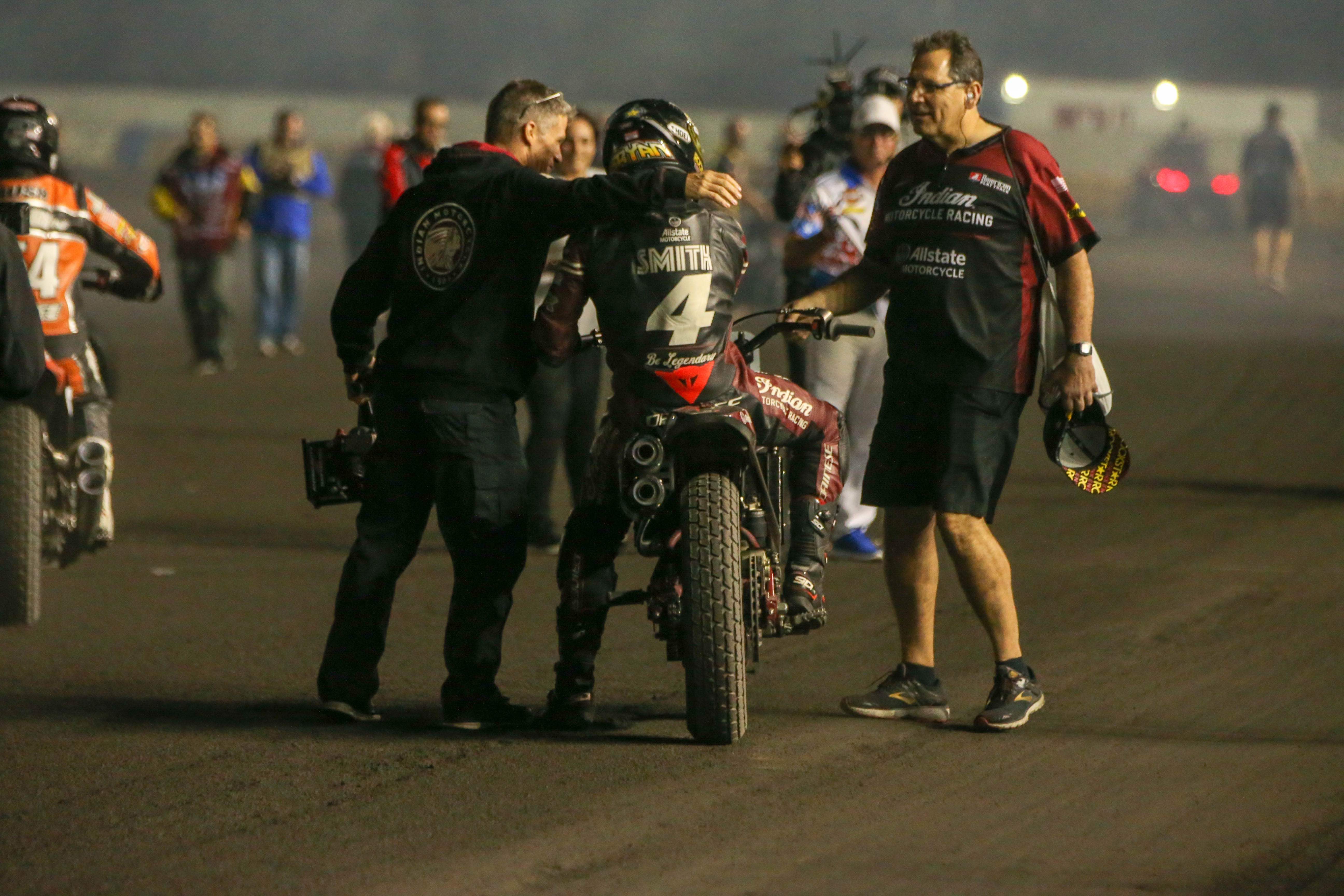
Smith, Rick Howerton (left) and Jeff Gordon celebrate a fantastic ending to the 2018 season in New Jersey. Scott Hunter photo.
As Smith says, Bo LeMastus is a racer, and a pretty good one. He grew up riding dirtbikes and racing motocross in Indiana and eventually got into road racing. He joined Crosley as an intern right out of college, worked his way through the ranks and never left, finally buying the company and re-making it as the retro turntable/jukebox/electronics brand in the U.S. When his body began to wear out from all the motorcycle racing he started racing cars, spec-Miata SCCA stuff and, later, ARCA and Truck-Series events.
“I really enjoyed the car and truck racing,” LeMastus says, “but nothing could replace motorcycles. I’ve known Rick for a long time, and we got along great from the very beginning. We had success right away. I had no knowledge of the dirt track scene back then; I was a motocrosser and road racer, but it was intoxicating, and we had a strong run right out of the gate. It’s hard to ignore that excitement and involvement we experienced between 2012 and 2016, and I missed it. So it made sense to keep the lines of communication open with Rick and Bryan, and things just happened to line up and click after we’d gotten together in Lexington last season.”
Ricky Howerton truly is a mad-scientist/engineer sort of character, someone who’s been designing and building ultra-trick pieces for Indycar and NASCAR teams for decades. The guy definitely knows his way around a machine shop, drafting table and CAD screen. Most of all, though, he appreciates simple and singularly focused designs and parts, pieces and assemblies made to do one job and one job only, with no waste or excess built into them.
Howerton also appreciates compactness and physically small machines, designs that emphasize mass centralization. They’re characteristics embodied by his Kawasaki-powered racers and ones that gel nicely with Smith, who’s five-four and maybe 140 pounds soaking wet. Howerton even built Smith a smaller version of the Indian FTR in the beginning of the 2018 season. Smith crashed the thing and broke his leg at last year’s Texas Half-Mile (and missed six races as a result), but the effort shows just how important compactness and centralized mass are to Howerton.
Looking at it, it’s clear that all of Howerton’s hard-won knowledge, data and experience came together in his new-generation race bike, which he started designing and building as soon as he, Smith and LeMastus agreed to reform in the summer of last year. Call it the culmination of everything Howerton has learned over his decades in design, motorsports and manufacturing. He even learned some things during 2017 and ’18 with Indian that he’s applied in the new bike, but he’s not about to talk specifics with anyone but team members.
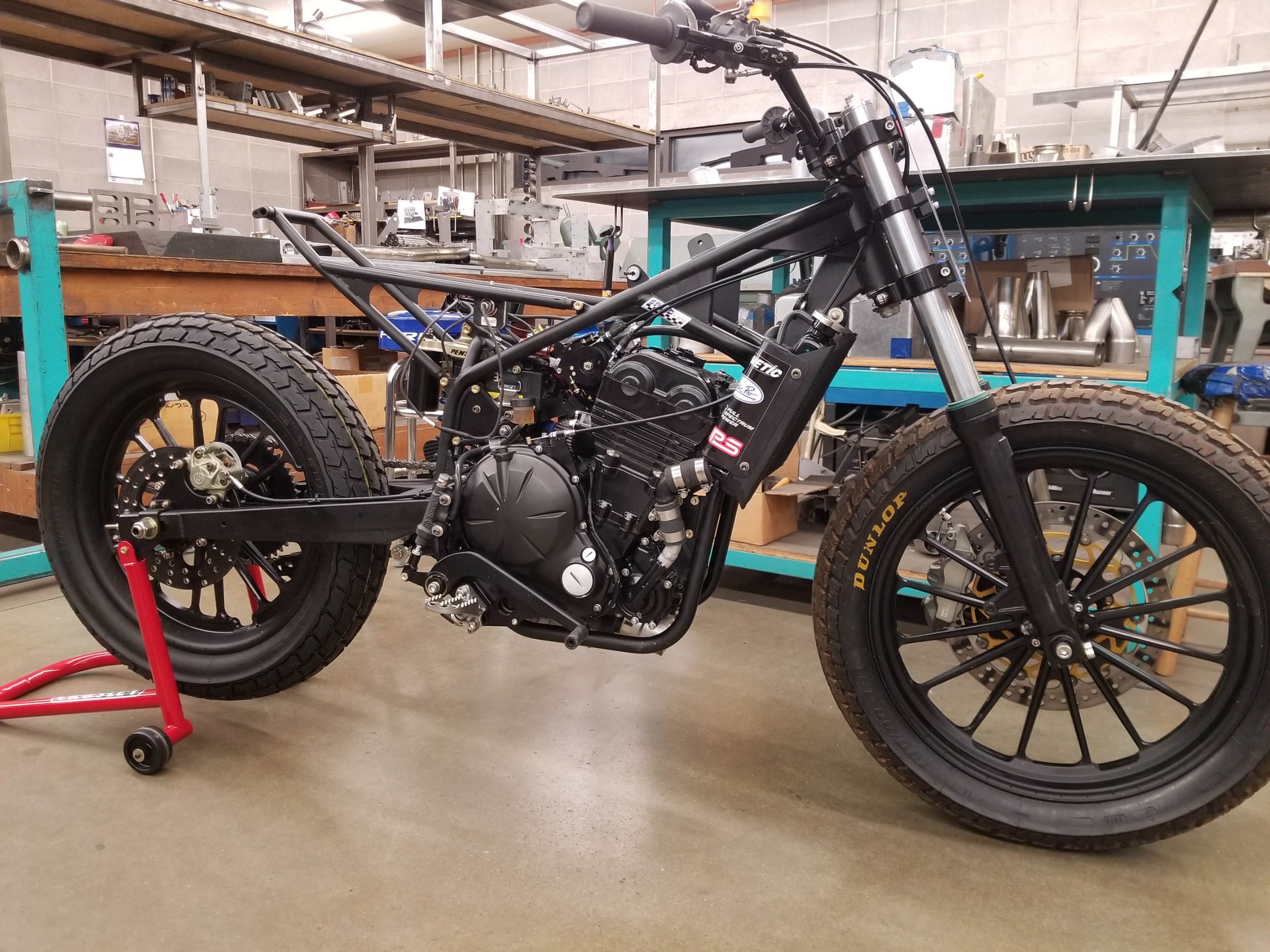
Stripped bare, the Crosley Howerton racer is a wonder of compactness and minimalist design. It's the Howerton way through and through...nothing extraneous.
“I had plenty of stuff in my head about what we’d do if we went out on our own again,” says Howerton, “even before Bo came to see us in Lexington. It was obvious the Indian didn’t fit Bryan all that well, cause he’s pretty small, and I have a lot of respect for Jared Mees’s ability to throw that thing around because he’s not much bigger than Bryan. By the Meadowlands Mile I’d computer-modeled all the parts we’d need to build, and we had some frames done, too. So we’d gotten ahead of things pretty well by the end of last season and were well on our way by Christmas.”
There aren’t many secrets in the engine department; just a tried-and-true Kawasaki Ninja 650-derived parallel twin that makes plenty of power and, most importantly, offers the uneven firing order of a 180-degree crankshaft design. This design features two power pulses in quick succession followed by a long, 540-degree pause, which allows the rear wheel to regain traction. It’s not unlike the power pulses of a modified Harley-Davidson XR750 ‘twingle’ engine, which has proven so successful over the decades.
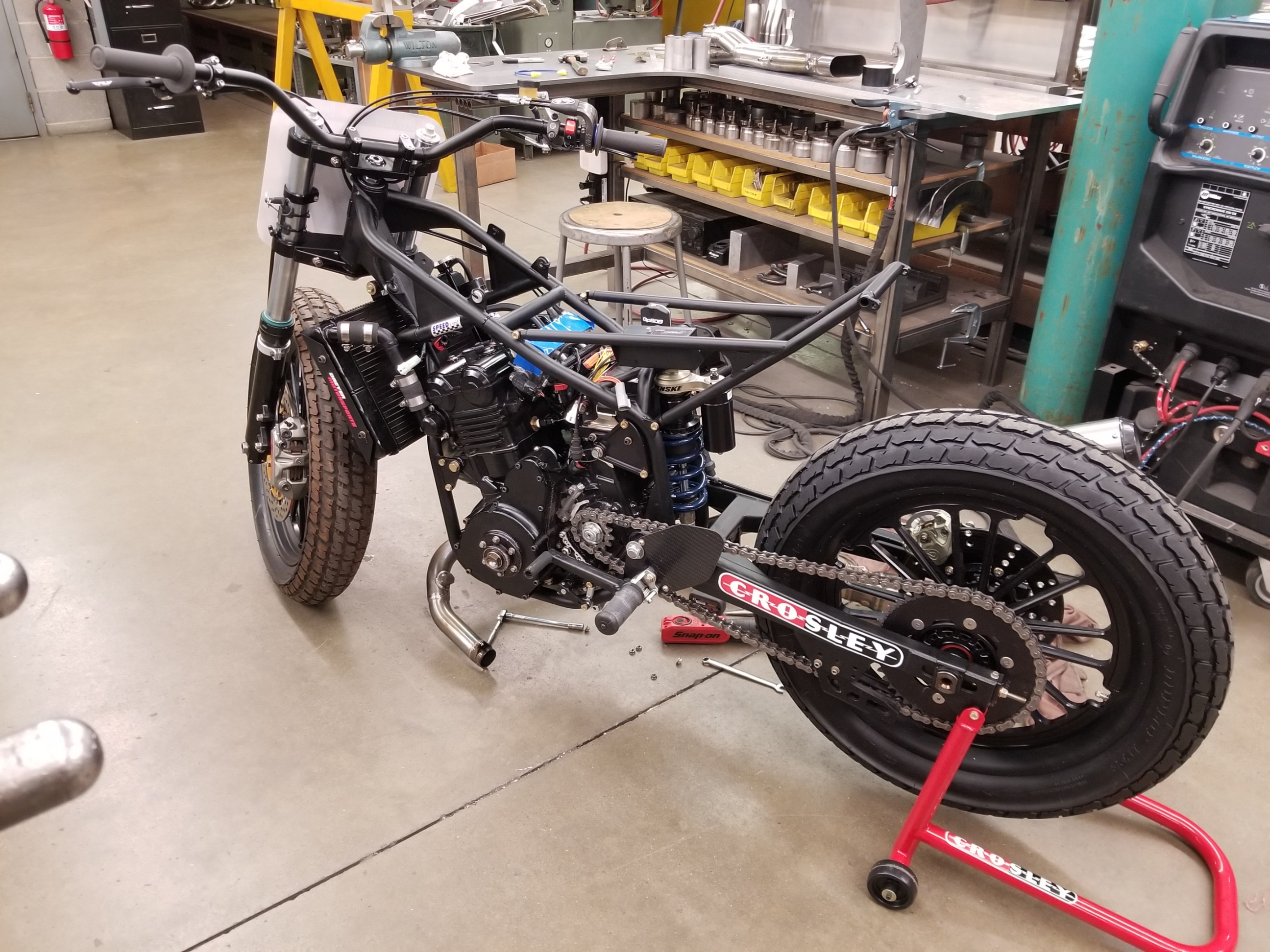
Howerton's centralized-packaging design is clearly evident here, with the relatively heavy shock and linkage assembly tucked right up against the back of the engine.
“We stick with 750cc of displacement,” says Howerton, “and customize the power we need through compression, cam profiles and timing, cylinder heads, exhaust systems, intake trumpets, etc. The type of power necessary is largely based on the radius of the corners, not just the track’s length or the length of the straights.
“I like the Kawasaki engine for more than its firing order, power and low-cost,” adds Howerton. “It’s really compact, sort of like a big single, and doesn’t have the intake and exhaust challenges of a V-twin.” The ‘big single’ analogy is apropos, because one of the first things you notice about the Crosley/Howerton Kawasaki is its size: It’s tiny, and very narrow, too. It’s also light, tipping the scales right on the AFT Twins class minimum of 310 pounds depending on exhaust and rear-wheel choices.
The frame and swingarm are of proprietary geometry and built by hand in the Howerton Motorsports skunk works using a combination tubes and hammer-formed chrome-moly pieces. The frame surrounds the engine as tightly as possible, with no space left unused; every nook and cranny available is used efficiently for fuel, throttle bodies, intake assemblies, the battery system and, just below, the single-shock linkage-type suspension assembly, which helps control the rear wheel more effectively. It also helps mass centralization by moving the shock and links closer to the bike’s center of mass.
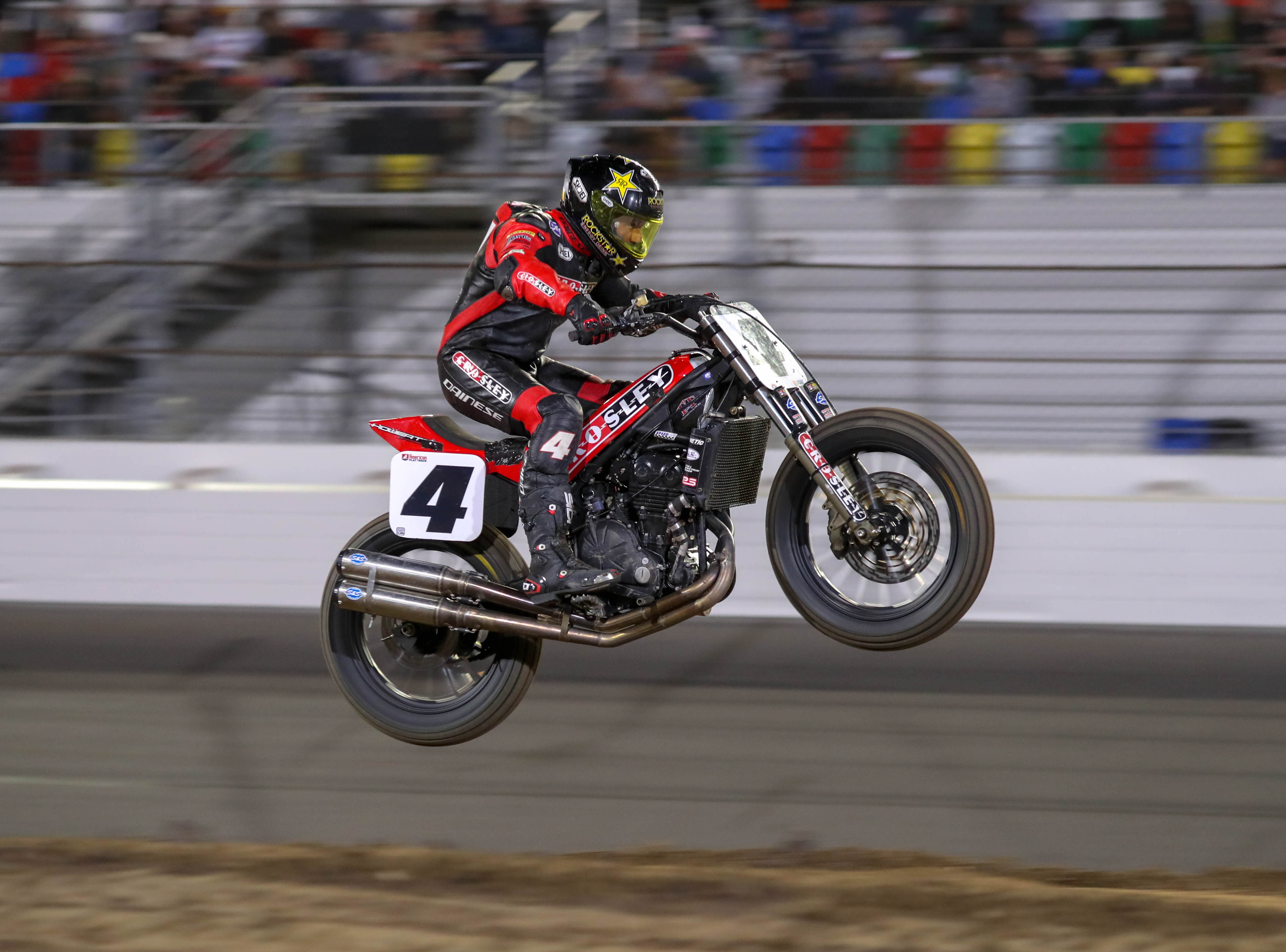
The Crosley Howerton team's debut at Daytona ended with a mechanical DNF in the Main, but Smith showed flashes of speed throughout the day - and night. Brian J. Nelson photo.
“Except for things like wheels, brakes, fork tubes, shock, tires, handlebars and controls, we pretty much make everything else in-house,” says Howerton. “Frames, swingarms, triple trees, bodywork, brackets and clamps, exhausts, fuel tanks, I could go on and on…and often do! It was a lot of 18-hour days leading up to Daytona, and there are still some 18-hour days. But we’re very much into this and we are definitely having some fun.
“The results aren’t there yet,” Howerton adds, “but we’re pretty confident we’ll be there soon enough. We had some bad luck at Daytona and made a poor setup choice in Atlanta, but in racing those things happen. We’ll bounce back.”
Smith sees things in a similar light. “Racing is a roller-coaster ride,” he said recently. “Ups and downs, and usually lots of ’em. We’ve had some downs in the early part of the season, but we’ll be around for the ride back up. It’s a long season.
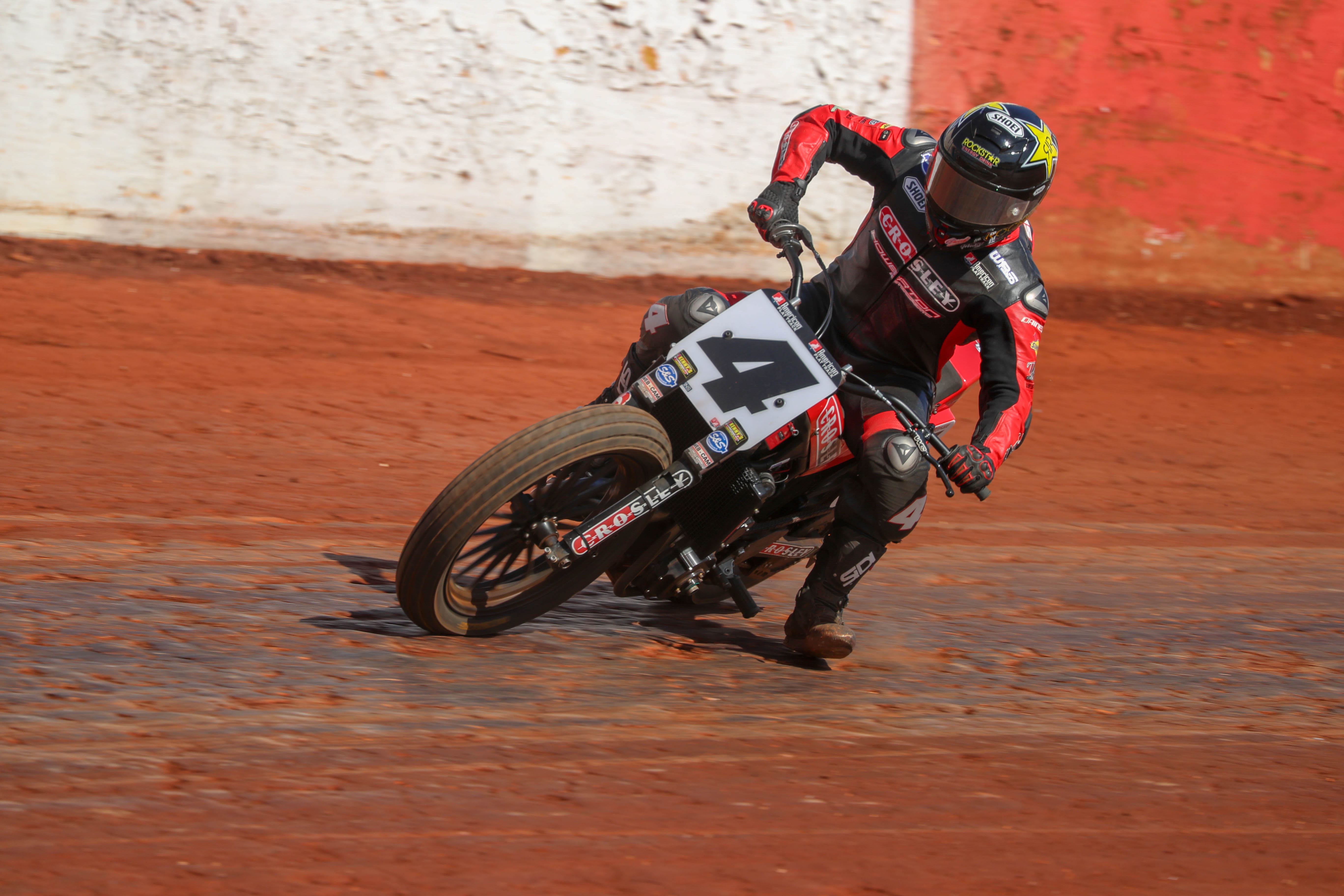
Despite a lackluster start to the season (scoring a 9th on the red clay of Dixie Speedway in Atlanta), Smith is looking forward to this weekend's Texas Half-Mile and the upcoming Miles. "We’ve had some downs in the early part of the season," he says, "but we’ll be around for the ride back up. It’s a long season." Indeed. Scott Hunter photo.
“Plus, I love this motorcycle. It fits me. I love the way it makes power, and it gives me the feedback I need to ride it to the very edge. I developed a lot of muscle memory riding Rick’s motorcycles during those early years with Team Crosley, and I’m feeling really good on the new bike now. When you’re comfortable and confident in the bike, you can push hard. And I’m comfortable, which means I’ll be pushing plenty hard all year long.”
Pushing hard, working hard, riding hard. The Crosley-Howerton guys do it as well as anyone. And they do it with big smiles most of the time. And that’s due to the concept of team that seems to resonate strongly within the group, at the races and in the Howerton Motorsports shop. This is clearly a family-esque unit, and that keeps these guys smiling and hammering and working hard through thick and thin. The efforts here and the perspective go beyond the most recent results at the racetrack.
It all fits. It all works. And it all feels right.
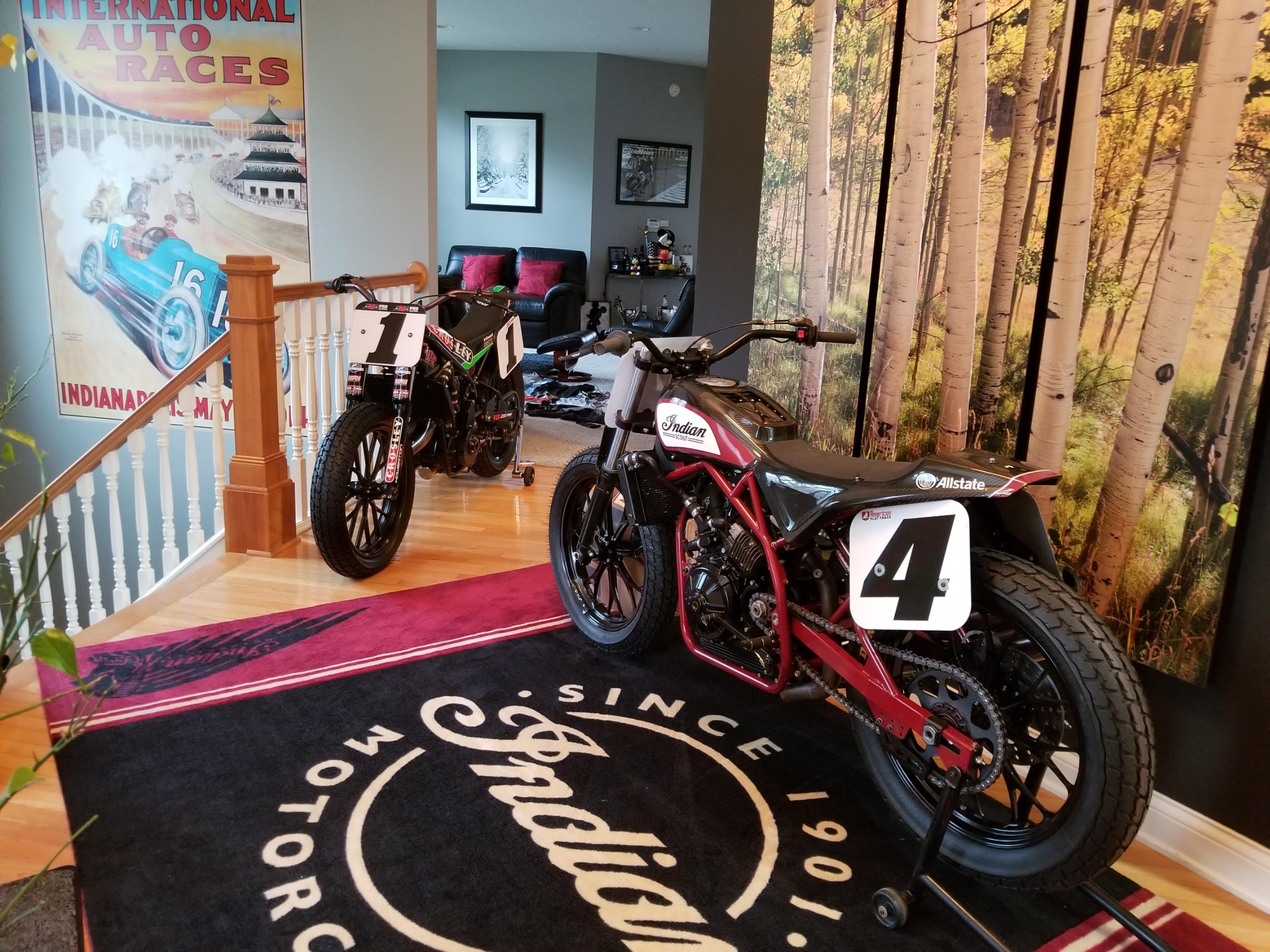
Ricky Howerton's home proudly displays some of the man's most memorable creations. That's the 2016 championship bike in the background, and the prototype Indian FTR750 Howerton built for Smith at about this time last year. It used a different frame than the stock FTR, which lowered and narrowed the bike for the diminutive Smith.
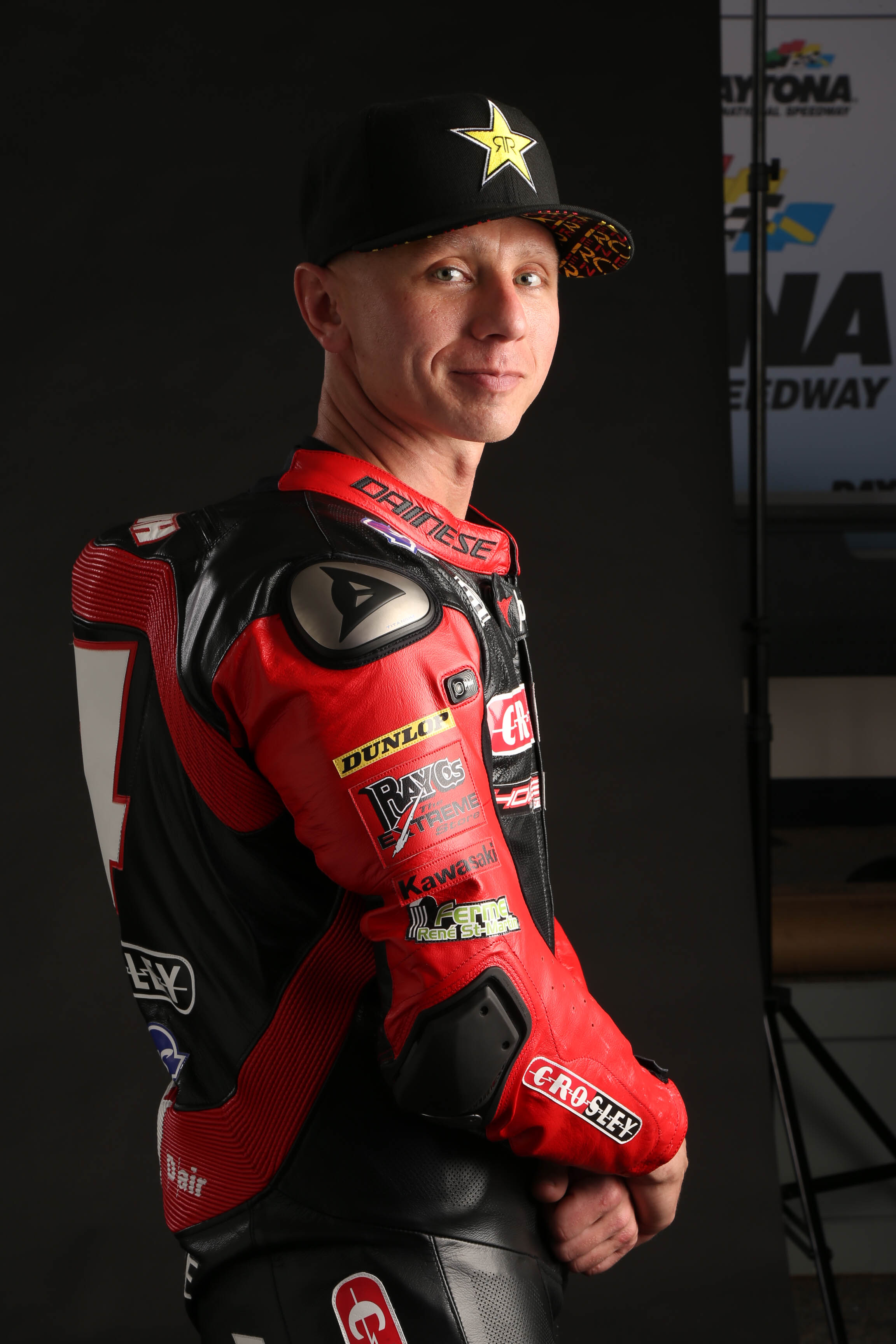
Latest news
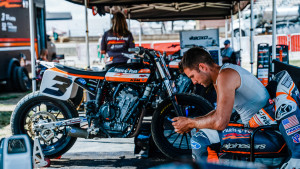
Through the Briar Patch
